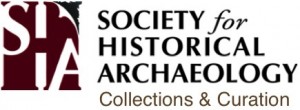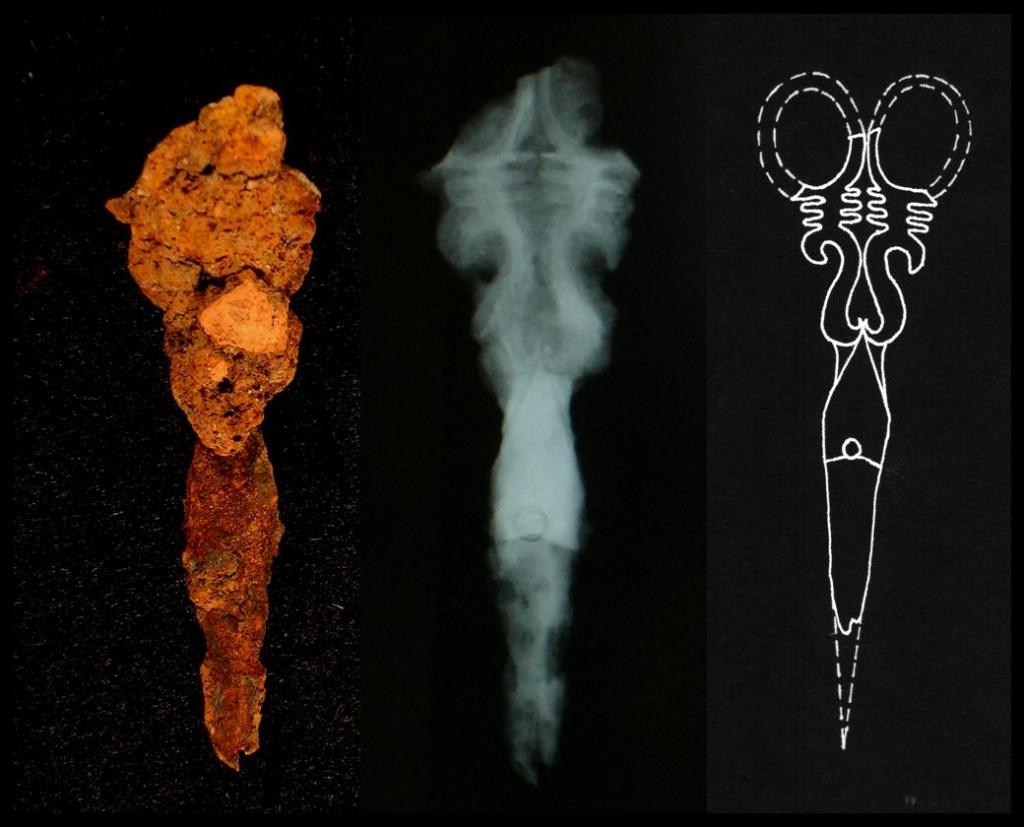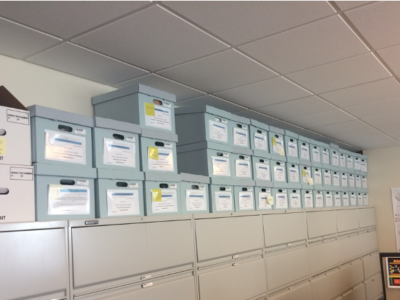Comments Sought for New Proposed Rule Concerning the Deaccession of Federally Owned and Administered Collections
By Giovanna Vitelli Chair, SHA Collections and Curation Committee The subject of deaccession, or the…
 The following post was previously published in the SHA newsletter as the introductory piece of a new series intended to identify professionals with expertise in particular classes of material culture who can assist others with artifacts in their collections. In light of the SHA’s recent polling of the membership’s comments on the 36CFR79 consultation process, and our Society’s response to the consultation, the issues surrounding collections stewardship and de-accessioning remain very much alive, especially in the domain of collections expertise. The Collections and Curation Committee have been sponsoring a series of blogs and newsletter items on members who communicate their specialist interest to the membership in the interest of sharing knowledge and expertise, which essential to good collections management practice. These posts, titled “My Artifact Obsession”, relate to material classes of artifacts such as metals and ceramics, but also to sources of information for collections assessment. New posts sponsored by the Committee will be released in tandem with publication in the newsletter. If you are interested in or have questions regarding the “My Artifact Obsession” project, please contact Committee member Sara Rivers-Cofield at sara.rivers-cofield@maryland.gov. If you are sponsoring or participating in projects incorporating collections-based components similar to “My Artifact Obsession,” the Committee would welcome your suggestions and recommendations for future blog posts. Please contact Sarah Platt at seplatt@syr.edu. This piece was originally published in the spring 2014 edition of the SHA Newsletter.
The following post was previously published in the SHA newsletter as the introductory piece of a new series intended to identify professionals with expertise in particular classes of material culture who can assist others with artifacts in their collections. In light of the SHA’s recent polling of the membership’s comments on the 36CFR79 consultation process, and our Society’s response to the consultation, the issues surrounding collections stewardship and de-accessioning remain very much alive, especially in the domain of collections expertise. The Collections and Curation Committee have been sponsoring a series of blogs and newsletter items on members who communicate their specialist interest to the membership in the interest of sharing knowledge and expertise, which essential to good collections management practice. These posts, titled “My Artifact Obsession”, relate to material classes of artifacts such as metals and ceramics, but also to sources of information for collections assessment. New posts sponsored by the Committee will be released in tandem with publication in the newsletter. If you are interested in or have questions regarding the “My Artifact Obsession” project, please contact Committee member Sara Rivers-Cofield at sara.rivers-cofield@maryland.gov. If you are sponsoring or participating in projects incorporating collections-based components similar to “My Artifact Obsession,” the Committee would welcome your suggestions and recommendations for future blog posts. Please contact Sarah Platt at seplatt@syr.edu. This piece was originally published in the spring 2014 edition of the SHA Newsletter.
Introducing a new newsletter feature: My Artifact Obsession
Historical Archaeologists have finally reached a widespread consensus about professional curation standards and storage conditions. Not everyone is in accord, but for the most part we have learned the error of our brown-paper-bag ways and moved into an archivally enlightened era of polyethylene bags and acid-free everything. We have even adopted preventive conservation techniques and treatment strategies to keep our collections intact forever and ever, amen.
But our work is never finished, and frankly, how we store things is the easy part. Something even scarier, harder to enforce, and yes, even more expensive than proper packaging still looms over the curation crisis. We still, as a profession, have not reached agreement about what is and is not actually worth retaining in those archivally stable time capsules we create.
There is no centralized resource offering guidance on archaeological collection strategies. Yes, each site is unique and therefore the decision of what to keep should be made on a case-by-case basis, but in practice that leaves the decisions to individual lab employees, repositories, and local regulatory agencies, none of whom are likely to be experts on the value of every artifact type for long-term research. Some might document and discard without much thought, while others could decide to keep it all just in case that fantastical creature, the future researcher, will need it. Neither scenario is desirable. Ideally you’d have people who really know their brick, shell, and glass make those decisions for that specific collection, resulting in collections with a Goldilocks retention scenario that is juuuust right; no future deaccessioning required.
Our default setting should be “think carefully and ask around,” but we need to know who to ask. Who decides how much brick is enough? Which shells to keep? How much window glass should be stored? Unfortunately, there is no directory of artifact specialists we can turn to when we have a site full of little pieces of something we know nothing about. Most of us have a network—someone we call about gun parts, and someone else we e-mail with a mystery ceramic— but most personal networks have gaps.
If there was a curator genie willing to grant me three wishes, I would wish for archaeological yellow pages where I could just look up “brick” or “nails” and there would be a name and number to call for trustworthy advice on how to deal with all of that messy architectural stuff. My second wish would be to ensure that all advisors in my new artifact yellow pages would provide their expertise for free. Finally, I would wish that all metals would stop corroding immediately because I love them. More on that later.
Since there is no curator genie, the only way to make my wishes come true— well, 2 out of 3 anyway— is to lead an effort within SHA’ Collections and Curation Committee to build these proverbial yellow pages. The idea emerged at the 2012 SHA meetings in Baltimore as I listened to frustrated colleagues share accounts of closed repositories, whole discarded collections, and lack of guidance on the dreaded D-words—deaccessioning and discard. I thought that if SHA as an organization could get these distressed archaeologists in touch with colleagues who have specific material culture knowledge, it would create a valuable resource for professional consultation on questions of artifact significance. Wouldn’t it be nice to have a small e-mail distribution list for the brick-inclined, the bead people, the button lovers, and so on?
Since then this has become one of the goals of the SHA’s Collections and Curation Committee. Members had already been developing a toolkit to evaluate archaeological collections in terms of significance, potential contributions to knowledge, and worthiness of prime real estate in storage. The toolkit is a thinking exercise that has value even if no action is taken, because awareness of what has already been collected is essential for determining what to collect in future. Still, the assessment tool is of limited value if the people using it lack a strong network of material culture specialists who can help identify the collection’s artifacts and their value for interpretation. The bottom line is that we need these specialists to speak up and identify themselves.
In an effort to bring our artifact enthusiasts out to play, we offer you the newsletter series, My Artifact Obsession. This will be a venue for artifact addicts to explain to readers why their particular beloved category of material culture is so important. In return for granting the artifact-obsessed this space to wax poetical or straight up lecture colleagues about their fixation, each author must be willing to join our network of specialists, receive inquiries, and offer advice to fellow professionals about their favorite artifact category. We don’t yet know what the product of this effort will look like because we need to build the network before we can figure out how to make it accessible. For now we just want e-mail addresses for people willing to help colleagues with one or more of the following:
This may seem like a lot to tackle— after all, loving artifacts shouldn’t be punishable by unwanted inbox clutter— but ideally we are looking for the artifact-obsessives of the discipline who like getting e-mails about their favorite finds. For example, I will offer myself up first in the following treatise on the importance of metals. Specialties can be more specific though; like looking at oyster shell instead of all shell— that is up to each volunteer. Furthermore, we are NOT asking specialists to offer cataloging advice to untrained lab staff, or provide IDs for the public’s garden/beach/metal detecting finds. The goal is to introduce the SHA membership to material culture specialists through the My Artifact Obsession series, and assemble groups of such specialists to assist professionals with specific collections-based inquiries.
If you’d like to share your artifact obsession, join the expertise network we are forming, and potentially influence curation policies that affect your data pool, e-mail me at sara.rivers-cofield@maryland.gov
My Artifact Obsession: Colonial Metals
A few years ago one of my co-workers bought me a magnet for Christmas that reads “Easily Distracted by Shiny Objects.” It is true. I am. But in my defense, I also get excited about a nice matte green patina and even rusty iron. I am into pretty much all of the “Little Metal Things” recovered on colonial sites. I revel in the feeling of turning a formerly unidentified metal object (UMO) into an innovative contribution to site interpretation, and I’m getting pretty good at the 17th and 18th century IDs. The industrially-produced 19th and 20th-century stuff mostly stumps me, but still, I hold out hope that someday I’ll see that UMO in a new context and its identity will be revealed.
But that can only happen if the metal is still there to be identified, and thanks to its tendency to corrode, survival is not a given. I don’t worry too much about the little copper and white metal doodads that feed my obsession; these tend to be stable, and even small unidentifiable blobs of copper and lead are usually awarded “small finds” status. But I do worry about what the archaeological world at large is doing about my beleaguered rusty iron. I hope it’s just a rumor, but I have heard of repositories that simply don’t accept iron artifacts because they are heavy and take up space and they’ll just turn to powder anyway; as if the value of an artifact for understanding cultural heritage is somehow tied to its ability to obediently await future researchers without decaying.
If that kind of thinking is feeding our discipline’s sampling strategies, then I can’t help but speak out in defense of iron. Yes, it is expensive to conserve iron artifacts, but there are ways to set priorities and limit costs. For example, it’s not terribly expensive to document and identify iron objects with x-rays. I can hear the protests now though: “Who has access to x-ray? I suppose I could try to find one, but that would be pretty difficult. Building conservation and x-ray funds into a scope of work could break the budget and it’s a hard sell to clients. Really, how do you justify the expense of special analysis or treatment for a bunch of rust balls that look like a collection of fossilized poo? It’s just too hard, too expensive, and a silly waste of resources.” My response to such arguments is this: No! This is so wrong! You know what else can look like fossilized poo? Colonoware. I don’t see anyone saying that’s not important enough to care about. And you know what else some clients think is too hard, too expensive, and a silly waste of resources? ARCHAEOLOGY. Every last bit of it.
If we think it’s worth it to spend time and money conducting careful excavations and processing artifacts for long-term curation, then we have to be careful about dismissing any class of artifact without getting as much information out of it as we can. Privileging one artifact class over another because of the expense of conservation or analysis undermines the arguments we use when justifying doing archaeology at all. The whole endeavor is supposed to be about collecting information. Wilfully letting a portion of the information corrode into oblivion without using existing tools to properly document them undermines our credibility. The burial environment already robs us of so many organic and other unstable materials, how can we justify neglecting a whole segment of finds we actually do recover? Imagine saying, “I know a Phase III on that huge 18th-century plantation might reveal a lot about our cultural heritage, but it that would be too expensive. Let’s do a Phase III on the tiny lithic scatter nearby instead and let the plantation get destroyed.” That’s the same kind of argument as limiting curatorial investment to stable artifacts.
Now I am not so obliviously ensconced in the state-of-the art (ca. 1998) Maryland Archaeological Conservation Laboratory that I don’t recognize the financial challenge that iron preservation and analysis presents. I might have an x-ray machine down the hall, but I know most folks don’t. What I don’t quite understand is why everyone doing historical archaeology wouldn’t make that equipment a priority. Total station? Yes. Ground penetrating radar? Yes. X-ray? Apparently not.
I just don’t get that. X-ray is our friend. It magically zaps through all that poo-looking corrosion to show the true artifact inside. Let’s take nails as a case in point. I may love little metal things, but even I find nails boring, and frankly, I don’t see much use in keeping them at all when they go untreated. They just take up space and fall apart. They are, however, highly diagnostic when you can tell if they are wrought, cut, wire, T-head, L-Head, etc. X-rays allow you to see that; they turn unidentified corroded nails into measurable and diagnostic architectural data. Catalogs with nail counts can be dramatically different when all nails are identifiable, and site interpretations more accurate as a result. Furthermore, if you x-ray a box of nails for $350 and discard them instead of paying the $350 box fee to store them, then I say you’re doing the curation crisis a solid.

Scissors discovered in a bag of unidentified iron from a 17th-19th century site aboard the Naval Air Station Patuxent River, Maryland (Naval District Washington). X-ray showed that the crusted object with brick adhered to corrosion was in fact a very fancy pair of embroidery scissors. Since the x-ray is to scale, an outline can be made of the scissors even though they have deteriorated.
Yes, it is expensive to own and maintain x-ray machines and certified staff to use them, but isn’t it worth it to dramatically improve the interpretation of historic sites? Don’t we want accurate catalogs? Don’t we want to document our finds before they turn into powder? Don’t we want to identify that amazing never-before-seen iron artifact that changes everything we know about the site so we can conserve it instead of ignoring it? Yes people. We want it. We just have yet to make it a discipline-wide priority.
I submit that we can be smarter about this. We can recognize that iron is a fact of life on historic sites and plan accordingly for some treatment, a whole lot of documentation, and informed discard. It makes a lot more sense than accepting inaccurate catalogs and long-term storage of corrosion powder as standard practice.
Not everyone has to love on the metals like I do, but pretty please let us at least send this message to all of our ferrous utensils, tools, farm equipment, architectural hardware, transportation hardware, cooking vessels, clothing fasteners, stoves, and miscellany: we care about you. We understand the importance of peering through your crusty exterior to the meaningful object inside. We know it’s not your fault you’re unstable, and we don’t think that the thousands of shards of indistinct redware we collect are somehow more important than you just because they don’t fall apart in the bag. Even if you are dying and we can’t afford drastic measures, we at least think you should be x-rayed for posterity. And if you are a UMO, you should be preserved for a researcher who might someday discover what you are.
In the hope that you readers will take this “love your metals” pledge, I offer my services in helping you identify them if I can. Colonial metals in particular are my favorite and bring joy to my inbox. If you, too, love metals, let’s make a club and have a distribution list! Send me your interest and your UMOs, and all of our reports may be enriched. sara.rivers-cofield@maryland.gov PS- Don’t show me your nails. Even my love of iron has limits.

I have a UMO that I found in the river that runs through my town. This area of the river, at the confluence, has been a repository since the city was founded in 1787. The UMO is a small metal pitcher. It is heavy. The handle is rounded and sounds hollow. It is not magnetic. It has no rust but some corrosion and staining from the river. It is dented. I am thinking either copper or pewter but I don’t know. I have photos I can provide.